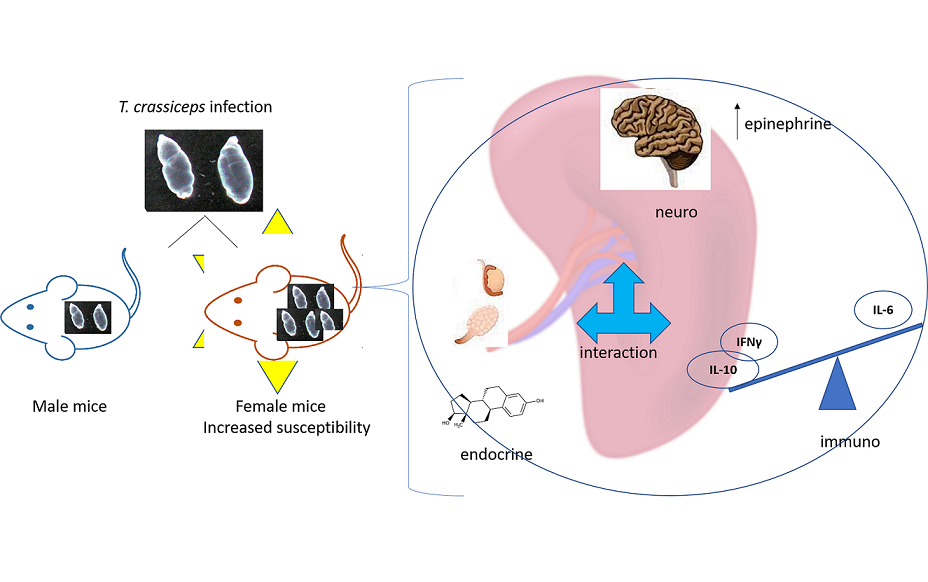The interaction of the nervous, immune, and endocrine systems is crucial in the maintenance of homeostasis in vertebrates, and vital in mammals. The spleen is a key organ that regulates the neuroimmunoendocrine system. The Taenia crassiceps mouse system is an excellent experimental model to study the complex host-parasite relationship, particularly sex-associated susceptibility to infection. The aim of the present study was to determine the changes in neurotransmitters, cytokines, sex steroids, and sex-steroid receptors in the spleen of cysticercus-infected male and female mice, and the association of these different components with whole parasite counts. We found that parasite load was higher in female in comparison to male mice. The levels of the neurotransmitter epinephrine were significantly decreased in infected male animals. The expression of IL-2 and IL-4 in the spleen was markedly increased in infected mice; however, the expression of Interleukin (IL)-10 and Interferon (IFN)-γ decreased. We also observed sex-associated differences between non-infected and infected mice. Interestingly, the data show that estradiol levels increased in infected males but decreased in females. Our studies provide evidence that infection leads to changes on neuroimmunoendocrine molecules in the spleen during infection. These changes are dimorphic and impact the establishment, growth, and reproduction of T. crassiceps. Our findings support the key role of the neuroimmune network in determining sex-associated susceptibility to the helminth parasite.

